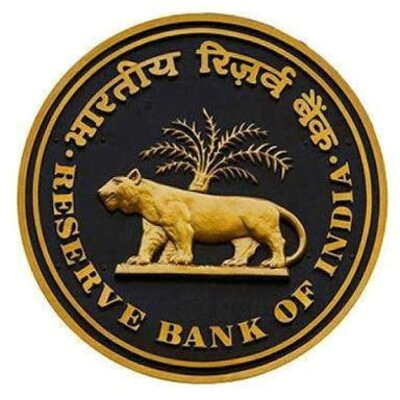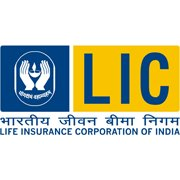LIC's Bold Leap into Health Insurance: A Game Changer for the Market
March 19, 2025, 9:51 pm
The Life Insurance Corporation of India (LIC) is on the brink of a significant transformation. The state-owned giant, known for its life insurance and pension plans, is eyeing a stake in the health insurance sector. This move could reshape the landscape of health insurance in India, a market already buzzing with competition.
LIC's chief executive, Siddhartha Mohanty, has expressed optimism about finalizing a deal by the end of March 2025. The company is not looking for a majority stake, but rather a substantial minority interest in a standalone health insurance firm. This strategic entry into health insurance comes at a time when private insurers are aggressively expanding their offerings to meet rising consumer demand.
The health insurance market in India is akin to a crowded bazaar. Numerous players, including Star Health Insurance and Niva Bupa, are vying for attention. LIC's entry could be the catalyst that changes the game. With its vast resources and brand recognition, LIC has the potential to drive down premiums, making health insurance more accessible to the average citizen.
Currently, LIC's portfolio does not include health insurance. This gap in its offerings has been glaring, especially as health-related expenses continue to soar. By stepping into this arena, LIC aims to tap into a lucrative market that has seen a surge in demand. The common man is feeling the pinch of high premiums, and LIC's involvement could alleviate some of that financial burden.
The stock market has reacted positively to LIC's plans. Shares rose nearly 3% following the announcement of its health insurance ambitions. Investors are keenly aware that LIC's entry could disrupt the status quo. A larger player in the market often leads to increased competition, which typically benefits consumers through lower prices and better services.
But the health insurance sector is not the only focus for LIC. The company is also in discussions with the Reserve Bank of India (RBI) regarding the issuance of long-term bonds. While India currently issues bonds with maturities of up to 40 years, LIC is pushing for even longer durations, including 50-year and 100-year bonds. This move reflects LIC's need for stable, long-term investment options to support its whole life policies.
The demand for long-term bonds is not just a whim. It is a necessity for an insurer like LIC, which needs to match its long-term liabilities with equally long-term assets. The RBI's willingness to consider these requests could pave the way for a new era in government securities, aligning with global practices where 100-year bonds are not uncommon.
As LIC prepares to make its mark in health insurance, the implications are profound. The company’s vast distribution network and established customer base provide a solid foundation for success. If executed well, this venture could not only enhance LIC's profitability but also improve the overall health insurance landscape in India.
The potential for lower premiums is particularly noteworthy. With LIC's entry, smaller players may be forced to reevaluate their pricing strategies. The result could be a more competitive market, where consumers benefit from better coverage options at more affordable rates. This is a welcome prospect for many, as health insurance costs have been a growing concern for families across the nation.
Moreover, LIC's move into health insurance signifies a broader trend in the insurance industry. Companies are increasingly recognizing the importance of diversifying their offerings. As health concerns become more prevalent, insurers are adapting to meet the changing needs of consumers. LIC's strategic pivot is a clear indication that it is not content to rest on its laurels.
However, challenges lie ahead. The health insurance market is complex, with regulatory hurdles and the need for innovative products. LIC will need to navigate these waters carefully. Building a robust health insurance portfolio will require not just capital but also expertise in underwriting and claims management.
In conclusion, LIC's impending foray into health insurance is a bold and strategic move. It has the potential to reshape the market, benefiting consumers and investors alike. As the company finalizes its plans, all eyes will be on how it executes this ambitious strategy. The stakes are high, but so are the rewards. If successful, LIC could emerge as a formidable player in the health insurance arena, setting new standards for affordability and accessibility. The journey ahead is fraught with challenges, but the promise of a healthier future for millions is worth the risk.
LIC's chief executive, Siddhartha Mohanty, has expressed optimism about finalizing a deal by the end of March 2025. The company is not looking for a majority stake, but rather a substantial minority interest in a standalone health insurance firm. This strategic entry into health insurance comes at a time when private insurers are aggressively expanding their offerings to meet rising consumer demand.
The health insurance market in India is akin to a crowded bazaar. Numerous players, including Star Health Insurance and Niva Bupa, are vying for attention. LIC's entry could be the catalyst that changes the game. With its vast resources and brand recognition, LIC has the potential to drive down premiums, making health insurance more accessible to the average citizen.
Currently, LIC's portfolio does not include health insurance. This gap in its offerings has been glaring, especially as health-related expenses continue to soar. By stepping into this arena, LIC aims to tap into a lucrative market that has seen a surge in demand. The common man is feeling the pinch of high premiums, and LIC's involvement could alleviate some of that financial burden.
The stock market has reacted positively to LIC's plans. Shares rose nearly 3% following the announcement of its health insurance ambitions. Investors are keenly aware that LIC's entry could disrupt the status quo. A larger player in the market often leads to increased competition, which typically benefits consumers through lower prices and better services.
But the health insurance sector is not the only focus for LIC. The company is also in discussions with the Reserve Bank of India (RBI) regarding the issuance of long-term bonds. While India currently issues bonds with maturities of up to 40 years, LIC is pushing for even longer durations, including 50-year and 100-year bonds. This move reflects LIC's need for stable, long-term investment options to support its whole life policies.
The demand for long-term bonds is not just a whim. It is a necessity for an insurer like LIC, which needs to match its long-term liabilities with equally long-term assets. The RBI's willingness to consider these requests could pave the way for a new era in government securities, aligning with global practices where 100-year bonds are not uncommon.
As LIC prepares to make its mark in health insurance, the implications are profound. The company’s vast distribution network and established customer base provide a solid foundation for success. If executed well, this venture could not only enhance LIC's profitability but also improve the overall health insurance landscape in India.
The potential for lower premiums is particularly noteworthy. With LIC's entry, smaller players may be forced to reevaluate their pricing strategies. The result could be a more competitive market, where consumers benefit from better coverage options at more affordable rates. This is a welcome prospect for many, as health insurance costs have been a growing concern for families across the nation.
Moreover, LIC's move into health insurance signifies a broader trend in the insurance industry. Companies are increasingly recognizing the importance of diversifying their offerings. As health concerns become more prevalent, insurers are adapting to meet the changing needs of consumers. LIC's strategic pivot is a clear indication that it is not content to rest on its laurels.
However, challenges lie ahead. The health insurance market is complex, with regulatory hurdles and the need for innovative products. LIC will need to navigate these waters carefully. Building a robust health insurance portfolio will require not just capital but also expertise in underwriting and claims management.
In conclusion, LIC's impending foray into health insurance is a bold and strategic move. It has the potential to reshape the market, benefiting consumers and investors alike. As the company finalizes its plans, all eyes will be on how it executes this ambitious strategy. The stakes are high, but so are the rewards. If successful, LIC could emerge as a formidable player in the health insurance arena, setting new standards for affordability and accessibility. The journey ahead is fraught with challenges, but the promise of a healthier future for millions is worth the risk.

